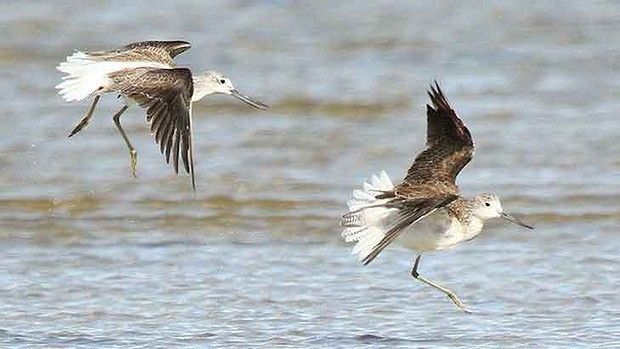
Away Arctic has preventive worldwide

If you venture regularly to coastal wetlands such as Alfred Cove you have probably seen a bird flying tourist all the way from the Arctic to the summer in Perth.
For some reason this large energetic wader prefers to breed in the frigid wastes of the northern polar regions before heading south to southern Europe and Asia, Africa, Australia and New Zealand.
Greenshanks arrive in the Perth area between September and November and spend the summer hunting in the shallows for insects, crustaceans, worms and molluscs.
Wading about in knee-deep water, they are very active feeders, dashing back and forth on their long yellowish-green legs and pecking at everything that moves.
Advertisement
They are also extremely versatile hunters, plucking insects from the air, chasing fish, and sweeping their bills through the mud in search of prey.
Unlike other waders, greenshanks prefer not to flock and are usually seen alone or in pairs, although occasionally they gather in groups of up to 100 to take advantage of some abundant food source.
In flight they are fast, speeding through the air with clipped beats of their wings and uttering a distinctive "tew-tew-tew" call.
When May comes they leave for the tundra to pair and breed, their summer feasting in WA
providing them with the energy to negotiate an astounding long-distance flight plagued by hunters, storms and predators – but once at their destinations it is illegal to do them harm.
This is because greenshanks are among a select group of migratory birds that are protected by international law – although, unfortunately, their habitats are often not.
DID YOU KNOW?
Some male birds carry out the main role in raising chicks, and some seem to relish being house husbands.
For example the male rose-breasted grosbeak sings 24-hours a day, even when he's incubating his eggs, while male canadian warblers have been known to get so excited about becoming fathers they start trying to feed their chicks before they've even hatched.
Source:www.smh.com.au
Comments
Related Posts
- Arturo, an Aging, Depressed Polar Bear, Might be Sent on a Trip to Canada
- ESA eSurge project delivered by CGI to help predict ferocity of UK coastal flooding
- The fate of Arturo last polar bear Argentina concerned animal advocates
- Oil Trains Spilled More Crude oil Last Year Than In The Previous 38 Years Combined!
- Footprints Believed to be the Oldest in Europe Found
Recent Posts
- How to add new words to iOS dictionary
- Touch ID patents reveal how Apple uses 'Secure Enclave' in iPhone 5s' A7 chip for fingerprint sensor
- WiFi 's data-free risks for terrorists and criminals
- Mobile phone on planes
- To extend the battery life on your iPhone, iPad and Android
- Google Glass Development Kit (GDK)
- Back Up data on Android Smartphone
- What is Google Glass?
- WhatsApp iOS 7 update of fancy design on German YouTube channel
- Jury's decision 290 million dollar fine about the patent litigation between Samsung and Apple
- A New Application; SNAPCHAT is Wanted to Buy BY GOOGLE AND FACEBOOK
- Apple Buys Action Sensor Maker PrimeSense
- November 25th International Day for the Elimination of Violence Against Women
- Potato Power Could Light the World But How??
- Could be doomsday for Giants
- About Us
- Authors
- Contact
- Privacy Policy
- RSS
- | @ Women Citizen
